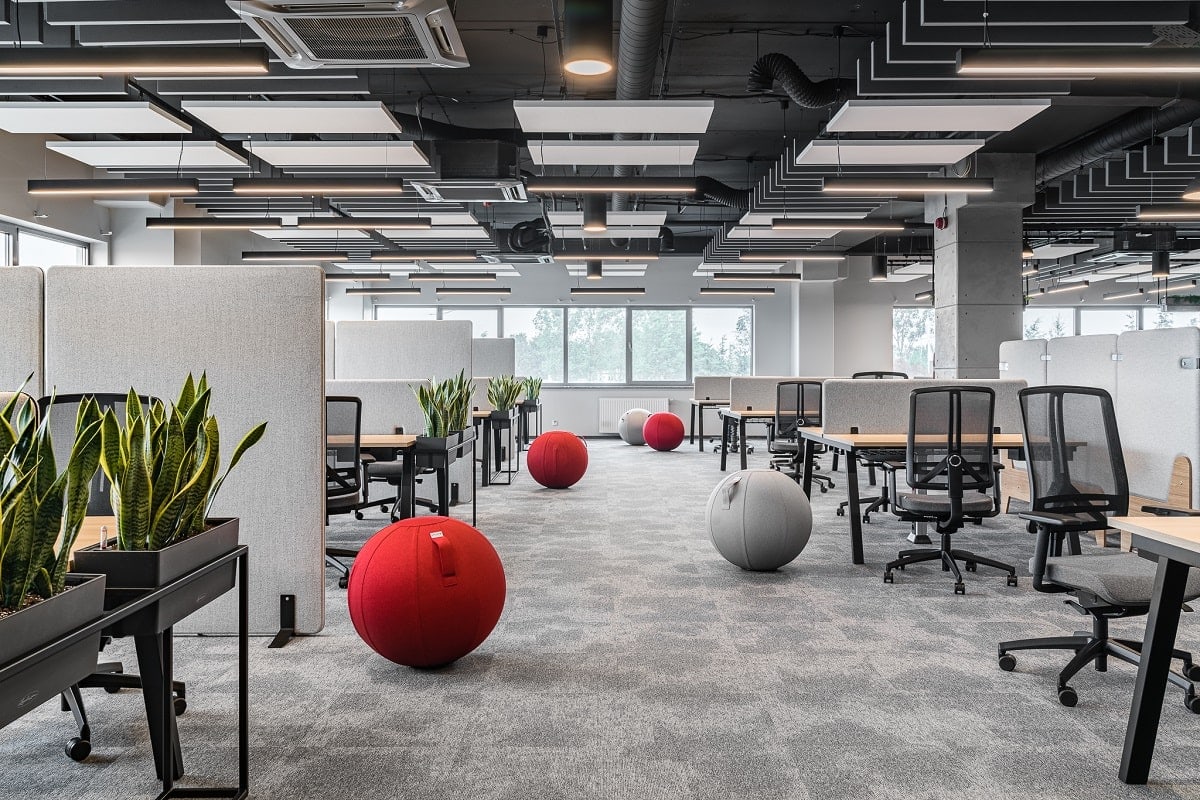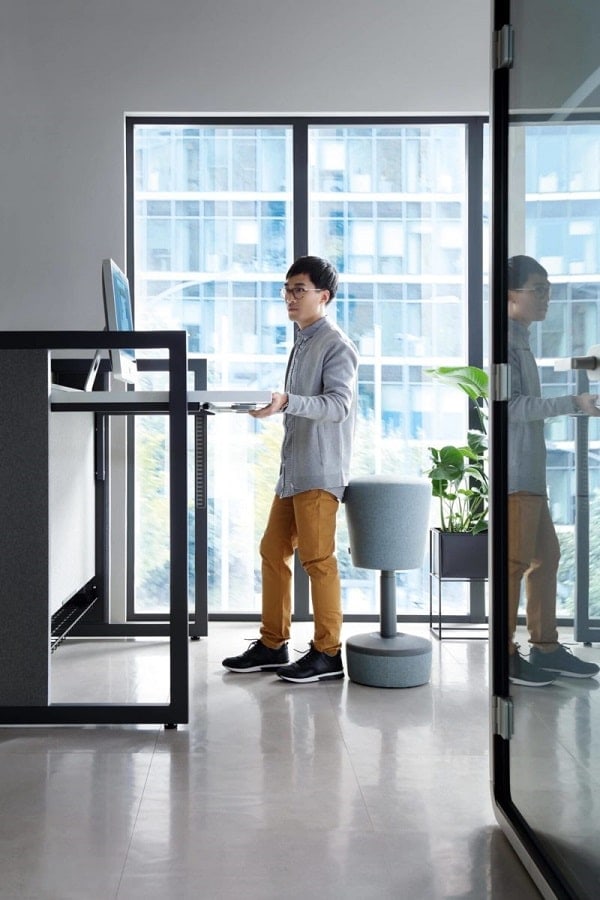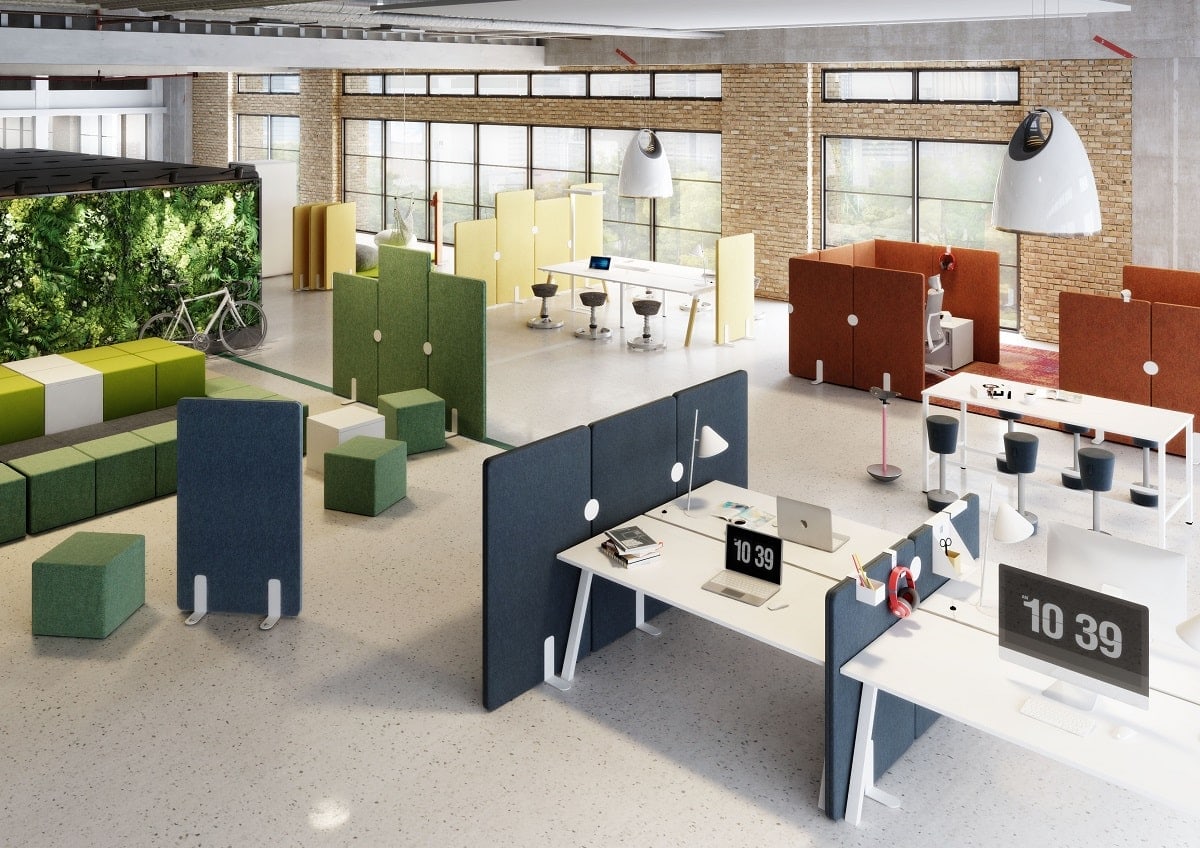How to prevent eye fatigue at the office? Here are some useful tips

In the age of digitalisation and the increasing number of hours spent in front of a computer screen, office ergonomics is becoming a key method to look after eye health. Business work space provides a unique environment in which various factors, such as lighting, the arrangement of computer equipment and regular breaks can affect staff well-being and health. As a predominant feature within a space, office furniture plays a significant role in shaping working conditions that are beneficial to the eyes. Read the article and find out how office design can benefit employees’ eye comfort and health in a dynamic work environment. Do read on to get the details!
What exacerbates eye fatigue in the office environment
Eye fatigue in the office environment is often overlooked as part of staff health, even though it proves a common problem that can reduce efficiency and well-being considerably. Below, we list the main factors aggravating the condition of your eyes at work.
- Unsuitable lighting in the workplace, both excessive and inadequate amount of light can unnecessarily strain the eyes
- Focusing your eyes on a monitor screen for long periods of time without regular breaks
- Improper workstation ergonomics which leads to an unnatural position of the eyes
- Low humidity in the office caused by air conditioning or heating
- Lighting or sunlight causing glare and reflections on computer screens
- Excessive brightness level or low contrast on the computer screen
Office eye syndrome
Office eye syndrome affects people who work long hours in front of various types of screens. Staring at a tablet computer, smartphone or monitor strains the eye muscles and the blink frequency is reduced by up to five times. Among the symptoms of office eye syndrome are eye dryness, burning and itching, a feeling of sand under the eyelids, blurred vision, hypersensitivity to light and even headaches.
Office eye syndrome, also known as Computer Vision Syndrome (CVS), is a set of symptoms that cause discomfort and decreased efficiency. Although eye fatigue related to digital devices is not recognised as a disease, the condition is affecting an increasing number of office workers. Frequently, they suffer from it because of poor working posture, poor lighting, and blinking too infrequently, which is typical when focusing intensely on a monitor. Preventing office eye syndrome primarily involves regular breaks from computer work, proper eye hygiene, as well as correct ergonomics of the workstation.
Office ergonomics that is beneficial for eye health
Office ergonomics is an aspect of work that, in terms of eye health, is often underestimated, however, so crucial to maintaining eye comfort. Employers tend to care exclusively for the position of the monitor and the lighting, while many more factors determine staff’s eye health.
Screen size and appropriate lighting
Monitor size and lighting are two main issues affecting digital-related eye fatigue. The most suitable computer screen size for most office workers is between 19 and 27 inches. The larger the working area, the less tired the eyes become, as they do not have to focus on the finer elements. Preferably, monitors should also come with the EyeCare technology, which combines a blue light filter with screen flicker control.
The workstation should receive as much natural light or appropriately selected artificial light as possible. To avoid creating screen glare, follow some lamp arrangement principles. Ideally, the light falls on the screen from the side, and not directly on it or into the worker’s eyes. The intensity is also important, with the optimum level of around 500 lux. Monitor brightness should be adjusted to match ambient conditions. Screens cannot be too bright or too dark so as not to cause eye fatigue.

Workstation optimisation: how furniture makes a difference for eye comfort
Ergonomic desks and chairs are a must-have, but workplace design is equally important. When the computer screen is positioned too low or too high in relation to the line of sight, it forces the eyes to work too hard. In contrast, an intelligent use of natural light and elimination of monitor glare can significantly reduce eye fatigue. When choosing flexible office furniture, it is worth weighing up their adjustability options to be able to provide personalised settings to suit every need.
Height adjustable desks: comfort at every level
The right office furnishings not only increase work efficiency, but also have a positive impact on health and well-being. Stand Up R manual height-adjustable desks feature desk position adjustment to match employee height, bringing the monitor to the line of sight and at the right angle. Shifting the height of the tabletop gives you an opportunity to balance your position by sitting down and standing up. By raising or lowering the worktop manually, employees always intuitively set it at the optimum height for correct posture.

Optionally, the ergonomic Balance electric height-adjustable desks provide an alternative. The Desk Control App reminds you to change your position, allows you to remotely adjust the height of the tabletop and stores your preferred settings. It is worth noting that working in a standing-up position not only helps to reduce the strain on the eyes, but also has a beneficial effect on circulation and energy levels. Positioning the tabletop at the ideal height for your work either sitting or standing translates into long-term health and occupational benefits.
The Eden of workplace: green promotes eye health
We often focus on the ergonomics of our chairs and the positioning of our monitor, but what can escape our attention is the impact of our surroundings on our eyesight. Eye-friendly furniture uses colours and materials that reduce eye fatigue. Work and eye comfort in open space can be improved by the upholstered Soniq mobile acoustic partitions which are available in a variety of shades. Easy-to-move around, they help adapt the workstation to current needs. By placing the office walls in key locations, you can also reduce glare and excessive lighting that is harmful to eyesight.
What our expert says
Biophilic design plays a role too Potted plants or moss walls bring nature into the office space. They improve air quality, which can reduce eye irritation and dryness, especially in air-conditioned environments, but will also create a visually pleasing, relaxing landscape. The natural green colour of plants is soothing to the eyes after a long focus on the computer screen
– says Eliza Donek, Product Manager at Mikomax.

Chillout zone: relaxation for body and eyes
In the hustle and bustle of daily work, the eyes often lack rest. This is where the concept of workplace chillout zone comes to the rescue! It is worth pointing out that a moment of relaxation and relaxing the muscles of the whole body during an eight-hour working day are equally important for mental and physical health, including your vision. The right interior arrangement can support both. By choosing our soft seating furniture with soft colours and textures, excessive eye fatigue can be reduced. The comfortable soft Packman armchairs and sofas or hammocks can contribute to creating an environment in which you can calm your racing thoughts. Lighting in the chillout area is also crucial, as warm light lamps with adjustable brightness settings create the ideal conditions for regenerating your eyesight. A comfortable social zone in the office is not only a contemporary trend, but a way of caring about employees’ health.
The right office furniture layout can help to reduce eye strain.
Discover our ergonomic office furniture that supports employee health >>
